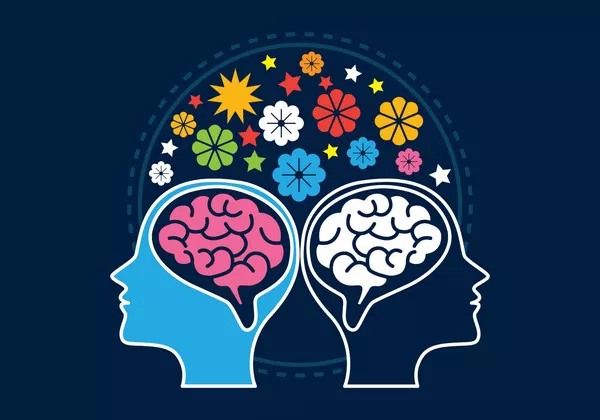Autism Spectrum Disorder (ASD) and Attention Deficit Hyperactivity Disorder (ADHD) are two prevalent neurodevelopmental disorders that often lead to confusion among parents, educators, and even healthcare professionals. While they share some overlapping characteristics, they are distinct conditions with unique symptoms, causes, and treatment approaches. This comprehensive guide aims to clarify the differences and similarities between ASD and ADHD, offering insights into their diagnosis, management, and the implications for those affected.
Understanding Neurodevelopmental Disorders
Defining Neurodevelopmental Disorders
Neurodevelopmental disorders are a group of conditions that affect the development of the nervous system, leading to impairments in personal, social, academic, or occupational functioning. These disorders typically manifest during early childhood and can persist into adulthood.
Common Characteristics
Neurodevelopmental disorders often share certain features, such as difficulties with social interactions, communication challenges, and behavioral issues. However, each condition has its specific characteristics that distinguish it from others.
Overview of Autism Spectrum Disorder (ASD)
What is Autism Spectrum Disorder?
Autism Spectrum Disorder is a complex neurodevelopmental condition characterized by a range of symptoms affecting social communication and behavior. The term “spectrum” indicates the wide variation in challenges and strengths exhibited by individuals with ASD.
Symptoms of ASD
Common symptoms of ASD can be categorized into two main areas:
1. Social Communication Difficulties
Difficulty understanding social cues, such as body language and tone of voice.
Challenges in forming and maintaining relationships.
Delayed language development or atypical speech patterns.
2. Restrictive and Repetitive Behaviors
Repetitive movements, such as hand-flapping or rocking.
Strong adherence to routines and rituals.
Intense interests in specific topics or activities.
See also: What Is ADHD In Adults Like?Everything You Need To Know
Diagnosis of ASD
Diagnosing ASD involves a comprehensive evaluation by a healthcare professional, often including developmental history, behavioral assessments, and standardized screening tools. Early diagnosis is crucial for effective intervention and support.
Causes of ASD
The exact causes of ASD are not fully understood, but research suggests a combination of genetic and environmental factors may play a role. Certain risk factors include:
Family history of autism.
Advanced parental age.
Prenatal exposure to certain medications or toxins.
Overview of Attention Deficit Hyperactivity Disorder (ADHD)
What is Attention Deficit Hyperactivity Disorder?
Attention Deficit Hyperactivity Disorder is another common neurodevelopmental disorder that primarily affects attention regulation, impulsivity, and hyperactivity. ADHD can significantly impact academic performance, social relationships, and overall quality of life.
Symptoms of ADHD
ADHD symptoms are generally grouped into two categories:
1. Inattention
Difficulty sustaining attention in tasks or play activities.
Frequent careless mistakes in schoolwork or other activities.
Challenges in organizing tasks and activities.
2. Hyperactivity and Impulsivity
Fidgeting or tapping hands or feet.
Difficulty remaining seated in situations where it is expected.
Interrupting or intruding on others during conversations.
Diagnosis of ADHD
ADHD is diagnosed based on specific criteria outlined in the Diagnostic and Statistical Manual of Mental Disorders (DSM-5). A comprehensive assessment typically includes parent and teacher questionnaires, behavioral observations, and an evaluation of symptoms over time.
Causes of ADHD
Similar to ASD, the precise causes of ADHD are not fully understood. However, several factors are believed to contribute to its development:
Genetic predisposition.
Brain structure and function differences.
Environmental factors, such as prenatal exposure to substances or toxins.
Comparing ASD and ADHD
Similarities Between ASD and ADHD
Despite being distinct conditions, ASD and ADHD share several similarities:
Neurodevelopmental Origins: Both disorders are neurodevelopmental and typically manifest during early childhood.
Social Challenges: Individuals with both conditions may face difficulties in social interactions and communication.
Behavioral Issues: Impulsivity and challenging behaviors are common in both disorders.
Key Differences Between ASD and ADHD
While there are similarities, important distinctions exist between ASD and ADHD:
1. Core Symptoms
ASD: Primarily involves challenges in social communication and repetitive behaviors.
ADHD: Focuses on issues related to attention, hyperactivity, and impulsivity.
2. Social Interactions
ASD: Individuals may struggle with understanding social cues and forming relationships.
ADHD: Individuals may have difficulty regulating attention and impulses but generally understand social cues.
3. Behavioral Patterns
ASD: Often characterized by restricted and repetitive behaviors.
ADHD: Marked by impulsive actions and hyperactivity rather than repetitive behaviors.
Co-occurrence of ASD and ADHD
It is important to note that ASD and ADHD can co-occur in the same individual. Research indicates that approximately 30-50% of individuals with ASD also exhibit symptoms of ADHD. This overlap can complicate diagnosis and treatment, making it essential for healthcare professionals to conduct thorough evaluations.
Treatment and Management
Treatment for ASD
Interventions for ASD are tailored to the individual’s needs and may include:
Behavioral Therapy: Techniques such as Applied Behavior Analysis (ABA) to improve social and communication skills.
Speech and Language Therapy: To enhance communication abilities.
Occupational Therapy: To develop daily living skills and reduce sensory sensitivities.
Treatment for ADHD
Management strategies for ADHD may involve:
Medication: Stimulant medications (e.g., methylphenidate, amphetamines) are commonly prescribed to help regulate attention and impulsivity.
Behavioral Therapy: Cognitive-behavioral therapy (CBT) can help individuals develop coping strategies and improve organizational skills.
Psychoeducation: Educating parents and teachers about ADHD to promote understanding and support.
Conclusion
While Autism Spectrum Disorder (ASD) and Attention Deficit Hyperactivity Disorder (ADHD) share some characteristics, they are distinct neurodevelopmental disorders with unique symptoms and treatment approaches. Understanding these differences is crucial for parents, educators, and healthcare professionals to provide appropriate support and interventions for individuals affected by these conditions. Early diagnosis and tailored interventions can significantly improve outcomes for individuals with ASD and ADHD, promoting a better quality of life.
Related topics:
Your Guide to Rumination: A Common Symptom of Mental Illness
Top 4 Supplements for IBS and Anxiety: A Comprehensive Guide
Understanding IBS as a Chronic Illness: A Complete Overview


